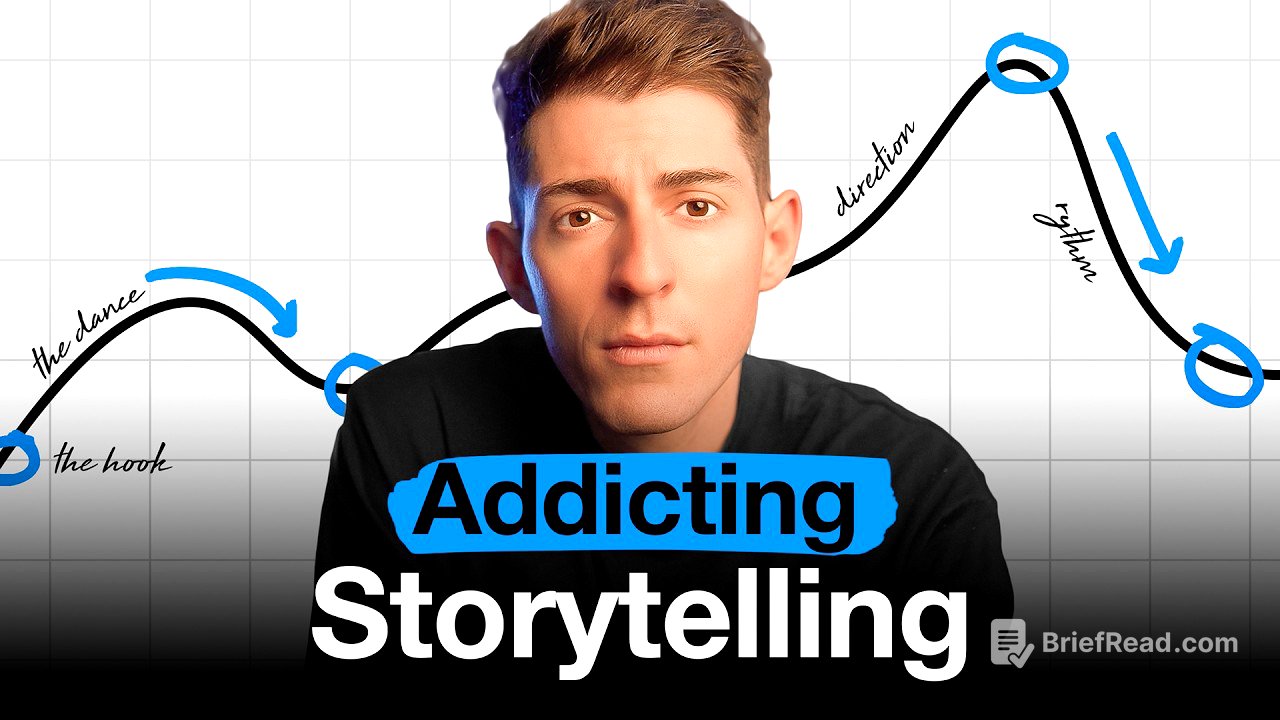TLDR;
This video provides six storytelling techniques to improve content creation. It emphasizes the importance of context and conflict, rhythm in sentence structure, conversational tone, starting with the end in mind, using unique story lenses, and creating effective hooks with visuals.
- Dance between context and conflict
- Rhythm through varied sentence length
- Conversational and relatable tone
- Direction by planning the ending first
- Unique story lenses for differentiation
- Visual hooks to capture attention
Intro [0:00]
The video introduces the importance of storytelling in content creation. It promises to share six storytelling techniques that will significantly improve the way viewers write scripts and make videos. The speaker, Callaway, shares his experience in creating viral short-form video content.
The Dance (Inspired by SouthPark) [0:24]
The first technique is described as "the dance," which involves alternating between context and conflict to keep the viewer engaged. Conflicts create open loops in the brain, while context helps close them. Matt Stone and Trey Parker from South Park suggest using "but" and "therefore" to create conflict loops, instead of "and then" which leads to piling details and losing viewer interest. The speaker illustrates this with an example from one of his videos, highlighting the use of conflict loops in the first 30 seconds.
Rhythm (Inspired by Gary Provost) [3:27]
The second technique focuses on rhythm, which involves creating a natural, subconscious pacing that is soothing to the brain. Drawing inspiration from Gary Provost, the speaker emphasizes varying sentence lengths to avoid monotony. He advises writing with a combination of short, medium, and long sentences to create a musical quality in writing. The speaker also mentions that he writes every sentence on a separate line to check if the sentences have different lengths.
Tone (Inspired by Steve Jobs, Casey Neistat, Emma Chamberlain) [5:20]
The third technique highlights the importance of tone, advocating for a conversational style that makes the viewer feel like they are in the room with the creator. The speaker references Emma Chamberlain, Casey Neistat, and Steve Jobs as examples of creators who excel at this. Steve Jobs' original iPhone launch keynote is mentioned as a prime example of creating a conversational atmosphere. To improve tone, the speaker suggests writing and filming videos as if talking to a close friend.
Direction (Inspired by Christopher Nolan) [6:57]
The fourth technique is direction, which involves starting with the end in mind. The speaker advises figuring out the ending first and then working backwards to build the story. He calls the last line of the script the "last dab," emphasizing its importance in leaving a memorable impression. Christopher Nolan's films are used as an example of complex plots where the ending must be worked out before building the conflict. The speaker suggests writing the first and last lines first, then filling in the space in between.
Storylenses (Inspired Taylor Swift) [8:05]
The fifth technique introduces the concept of "story lenses," which involves finding a unique angle or spin on a particular story to differentiate content. The speaker uses the example of Taylor Swift attending the Super Bowl, suggesting that common lenses would be what she's wearing or her reactions, while a less common lens would be the business impact she had on the NFL. The speaker chose the latter, resulting in a video that gained a million views due to its unique perspective.
The Hook (Inspired by Epic Gardening) [9:17]
The sixth and final technique focuses on the hook, emphasizing its importance in retaining viewers. The speaker suggests that the first line should be punchy and indicative of the plot. He advises against using opaque lines that don't immediately grab the viewer. Additionally, he highlights the effectiveness of visual hooks, which complement what is being said with a visual on the screen. Kevin from Epic Gardening is mentioned as someone who effectively uses visual hooks. The speaker concludes by summarizing that when creating a hook, one should get to the point and show while telling.
Outro [10:49]
In the outro, the speaker encourages viewers to join his free community, Wavey World, for more content on improving their business or building their personal brand. He also asks viewers to share their thoughts on the video.
